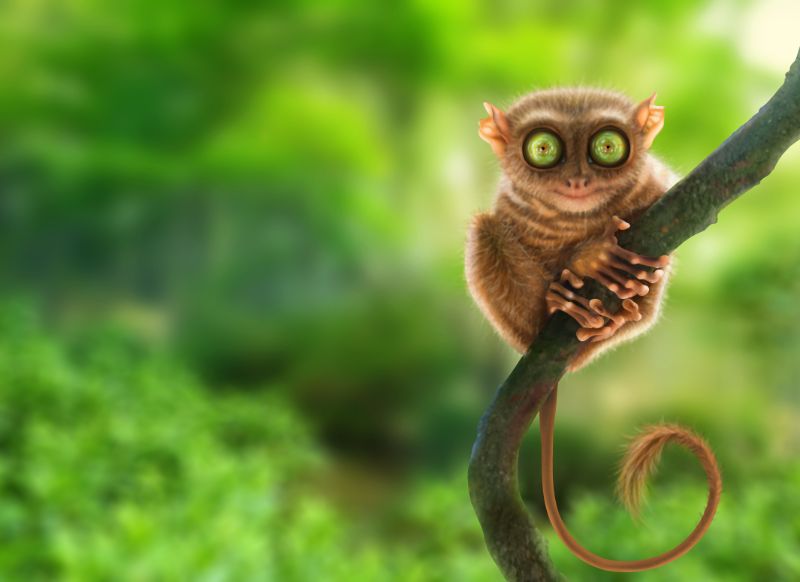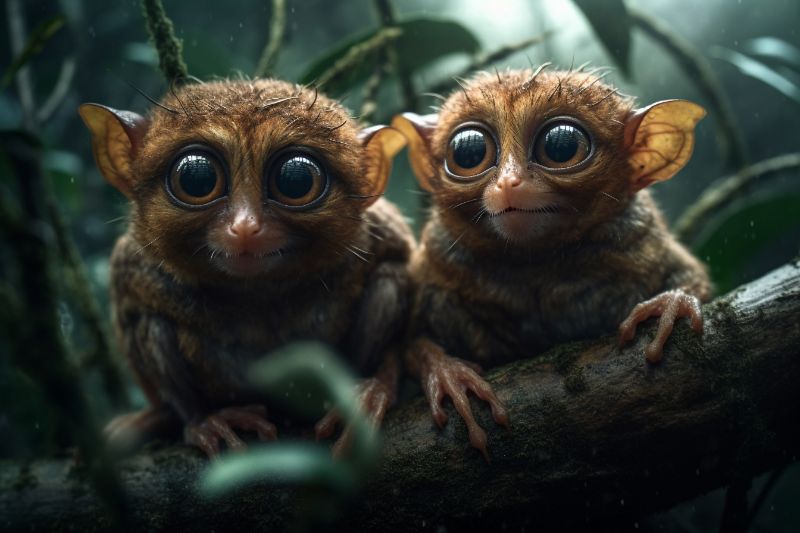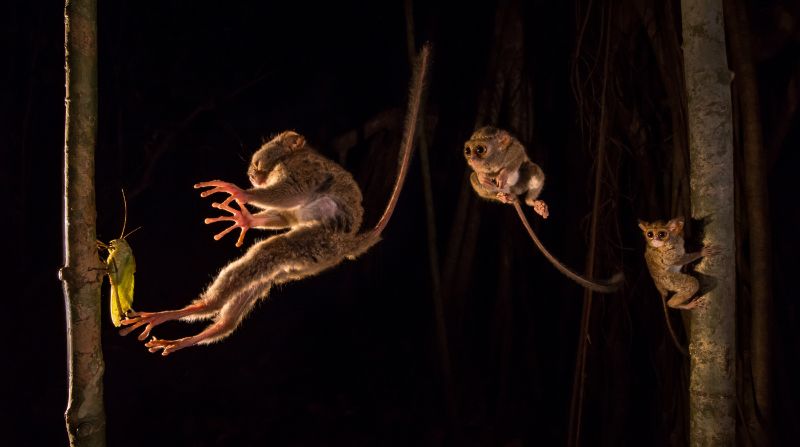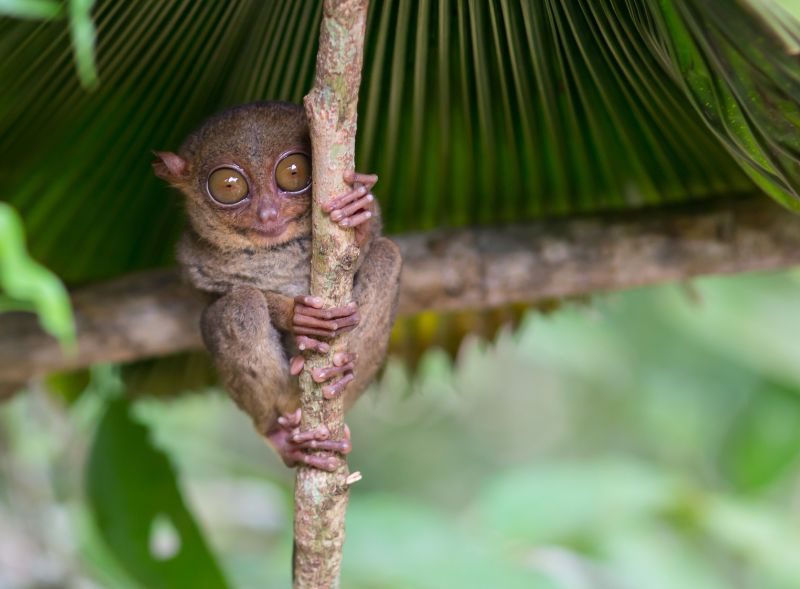Discover the Tiniest Primates on Earth

Unveiling the mysteries of the world’s tiniest primate, we step into the enchanting realm of the Philippine tarsier. With roots tracing back 45 million years, this peculiar species belongs to the Tarsiidae family and contradicts the common misconception of being just another ‘monkey’.
Eye-Catching Features of the Smallest Primate

Stunned by the enormous eyes of the smallest primate? These globular wonders, grander than their stomach and even their brain, serve a practical purpose. Their colossal size helps them in nocturnal hunting, providing spectacular night vision. Side note — they can’t rotate their eye sockets, but, like owls, can swivel their heads a stunning 180 degrees!
Distinct Attributes
The tarsiers possess finger-like claws, bare ears, and tails that surpass the length of their bodies. Here are a few striking features:
- Fur color: A subtle gray-brown covering adds an endearing charm.
- Tail: Resembling a rat’s tail, it’s bare and much longer than their furry bodies.
- Lip: Apart from lacking a cleft, they have the unique ability to showcase a range of expressions, although don’t expect any of them to be cheerful!
Unusual Behaviors
These compact creatures possess specialized teeth and can cover astounding distances, leaping up to 10 feet from tree to tree for sustenance or safety.
Communicative Tactics of the Smallest Primate

Though this petite primate may not be the chatterbox of the animal kingdom, it has some irrefutable, standout vocal tactics. Ranging from a piercing, high-pitched call to a soothing, bird-like trill when at ease, their conversations are hard to ignore. In group settings, they mimic the chirping of locusts, creating a symphony of their own.
Non-Verbal Signals
The tarsier communicates via non-verbal signals too. Female tarsiers ‘mark their man’ emitting a scent from a gland near their mouth. They also indulge in social grooming, ensuring removal of parasites and dead skin from one another, nurturing bonds and hygiene all at once.
Intricacies of Tarsier Reproduction
When it comes to reproduction, these small primates exhibit distinct patterns. Females are single-handedly responsible for raising young ones, displaying exceptional care and attention.
- The female tarsier possesses a higher primate type of placenta.
- They may have multiple nipple pairs, but only a single pair is functional. The others serve as supportive anchors for the newborn.
- A gestation period of around six months culminates into the birth of a single, furry infant with eyes wide-open.
Baby Steps
The young tarsier, extraordinarily advanced, is capable of climbing within two days of birth. By day four, jumping becomes part of its skill set. After around 60 days of nursing, it progressively becomes self-sufficient, reaching sexual maturity at two years old.
Conservation Crisis: Hope for the Smallest Primate

This marvelous creature, the smallest primate, teeters on the edge of extinction due to deforestation and illegal pet trading. Their natural habitation, the rainforests, face relentless damage and their numbers in the wild diminish aggressively. Actions for the conservation of this species, though in place since 1991, struggles due to rampant logging and poaching activities.
Remember – while these fascinating beings can be kept as pets, their life expectancy reduces to almost half outside their natural habitat. Let’s give them the life they deserve, in the wild.
Related Resources: